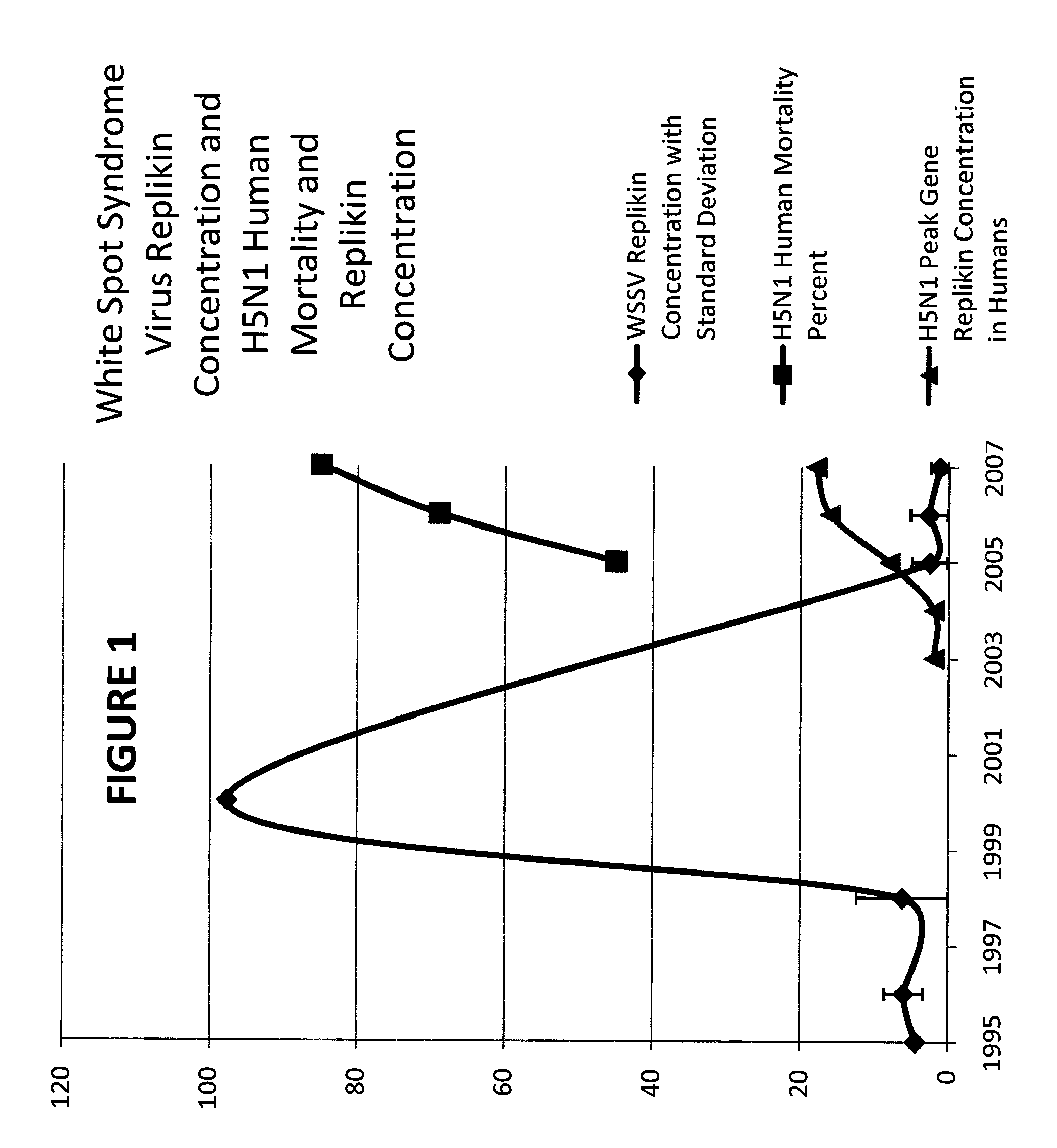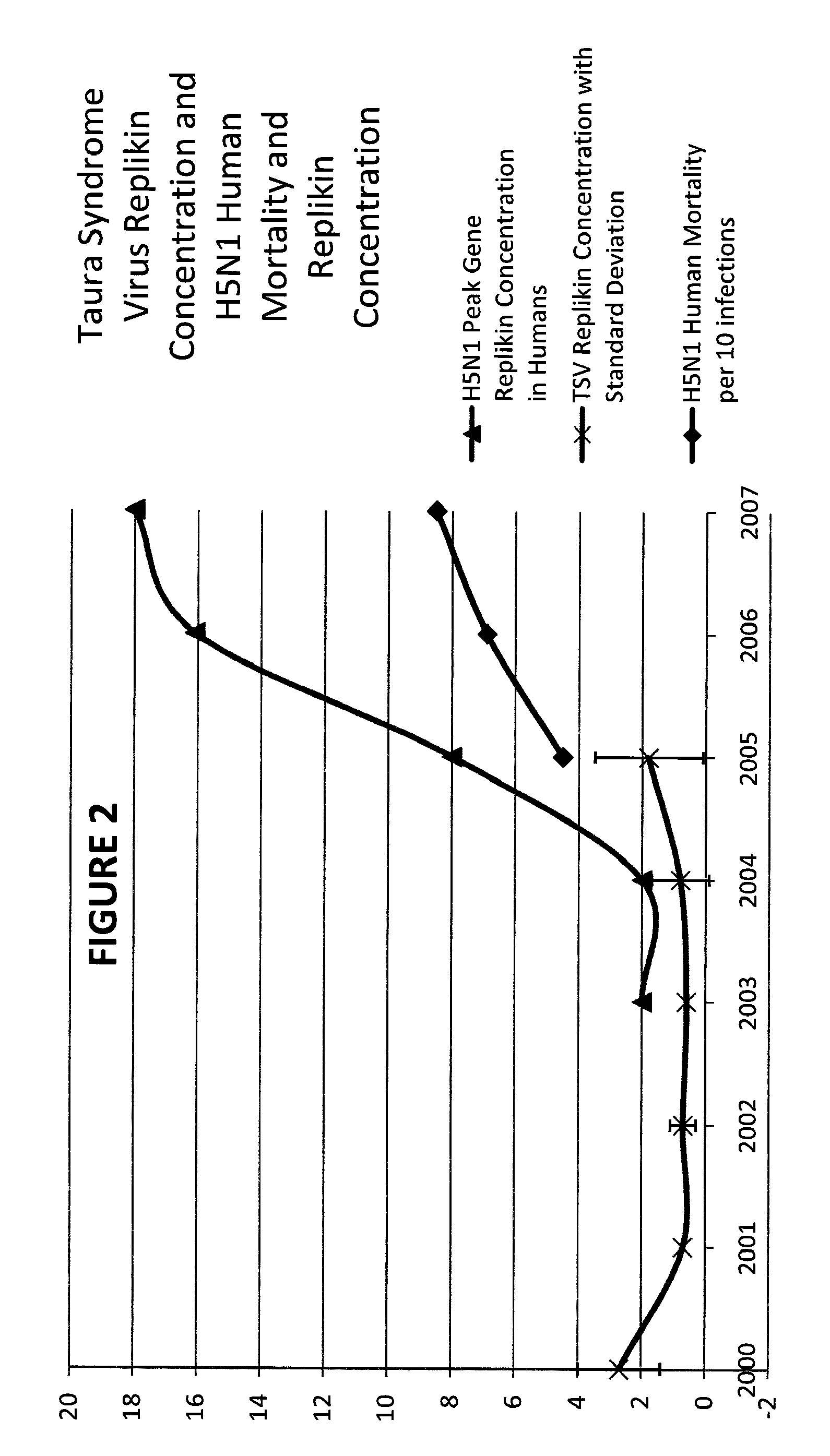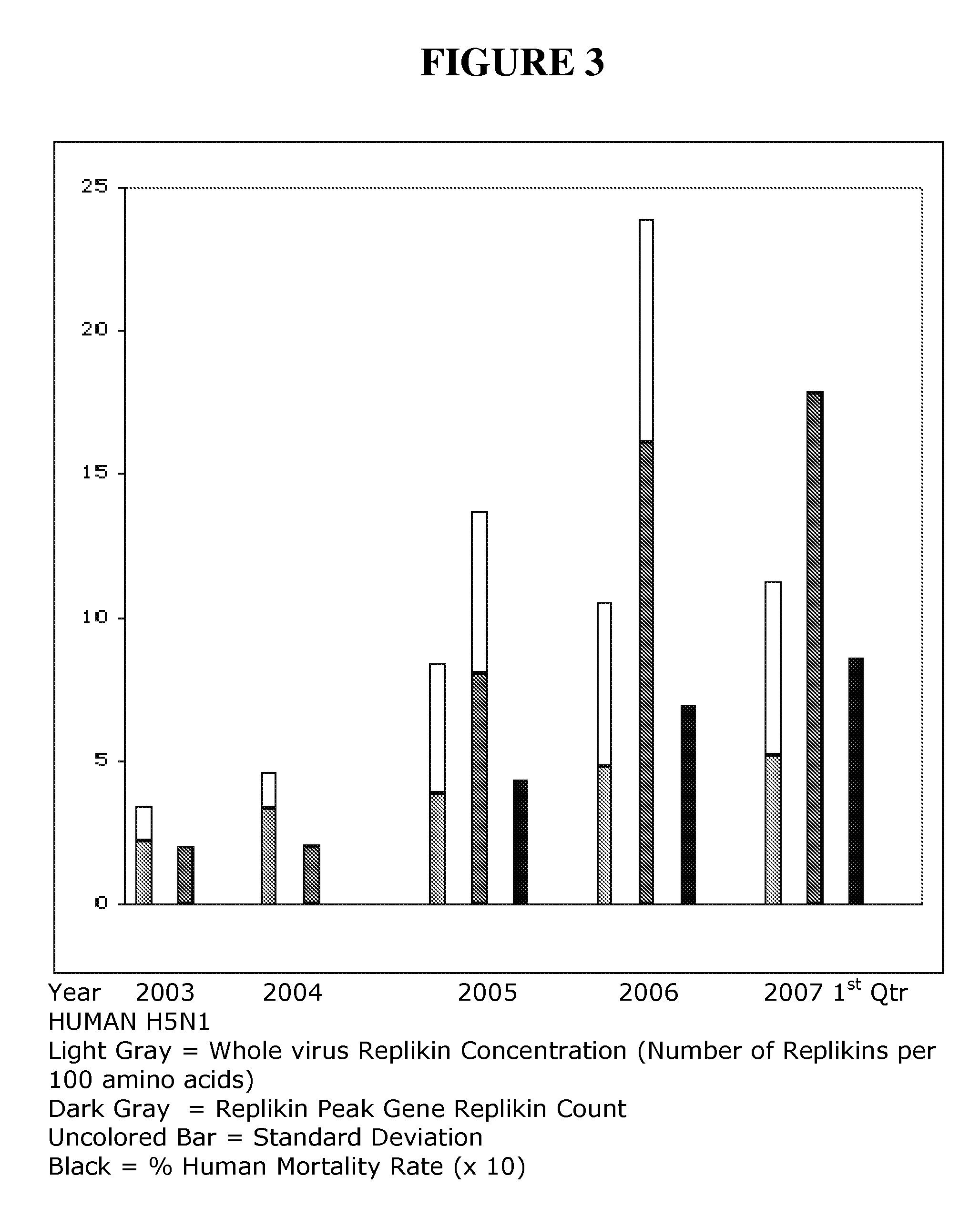Method of predicting influenza outbreaks by correlating an increase in replikin count in shrimp white spot syndrome virus and/or taura syndrome virus
a technology of shrimp white spot syndrome and correlation, applied in the field of predicting influenza outbreaks, can solve the problems of substantial morbidity, mortality and economic cost impact of pandemic influenza, and the correlation between the concentration of replikin sequences in viral or organismal proteins and major outbreaks of disease, so as to achieve the effect of increasing the probability
- Summary
- Abstract
- Description
- Claims
- Application Information
AI Technical Summary
Benefits of technology
Problems solved by technology
Method used
Image
Examples
example 1
Determination of Very High Replikin Concentration in Ribonucleotide Reductase from Accession No. AAL89390
[0176]Replikin concentration was determined for ribonucleotide reductase publicly available at Accession No. AAL89390. The amino acid sequence was translated from the total genome of a year 2000 isolate of White Spot Syndrome Virus made publicly available at Accession No. NC 003225.1. The Replikin concentration in the protein was an unusually high 103.8 and the Replikin concentration of the Replikin Peak Gene of the protein was a yet higher 110.7. The Replikin concentration of the protein was determined by dividing the number of Replikin sequences identified in the amino acid sequence of the protein, 497 Replikin sequences, by the total amino acid length of the protein, 479 amino acids, to arrive at 103.8 Replikin sequences per 100 amino acids. The Replikin concentration of the Replikin Peak Gene was determined by dividing the number of Replikin sequences identified in the segmen...
example 2
Determination of Very High Replikin Concentration at Accession No. NP 478030.
[0181]Replikin concentration was determined for a functionally undefined protein in the genome of an isolate of White Spot Syndrome Virus from 2000 made publicly available at NP 478030. The Replikin Concentration in the protein was again an unusually high 97.6 Replikin sequences per 100 amino acids. The Replikin concentration was determined by dividing the number of Replikin sequences identified in the amino acid sequence of the protein, 361 Replikin sequences, by the total amino acid length of the protein, 370 amino acids.
[0182]The amino acid sequence of NP 478030 is of interest because, like the protien in Example 1, it demonstrates an overlapping of Replikin sequences that results in very high Replikin concentration comparable to the highly-replicating P. falciparum of malaria. These high concentrations of Replikin sequences again provide a reservoir of Replikins for transfer to influenza viruses.
[0183]
P...
example 3
Determination of Low Replikin Concentrations in 2005 and 2007 Isolates of WSSV from Accession Nos. AAW88445 and ABS00973
[0184]In 2006 and 2007 White Spot Syndrome Virus (WSSV) has been observed to be dormant in shrimp. This continued decline of WSSV into “quiescent” or “dormant” levels in 2006-2007 is demonstrated in mean Replikin concentrations for viruses isolated during 2005-2007 that are very low as compared to years wherein the virus demonstrated greater virulence, such as 2001. See Table 4 in Example 4 below. The continued quiescence in WSSV in 2007 may be contrasted with an observed rising of Replikin concentration in Taura Syndrome Virus Replikin during this period.
[0185]As may be seen from the analysis below, Accession Nos. AAW88445 and ABS00973 have low observed Replikin concentrations. ABS00973 contains a single Replikin sequence in the entire disclosed amino acid sequence of 240 residues. The single Replikin sequence is underlined. The Replikin concentration of Accession...
PUM
| Property | Measurement | Unit |
|---|---|---|
| concentration | aaaaa | aaaaa |
| concentrations | aaaaa | aaaaa |
Abstract
Description
Claims
Application Information
 Login to View More
Login to View More - R&D
- Intellectual Property
- Life Sciences
- Materials
- Tech Scout
- Unparalleled Data Quality
- Higher Quality Content
- 60% Fewer Hallucinations
Browse by: Latest US Patents, China's latest patents, Technical Efficacy Thesaurus, Application Domain, Technology Topic, Popular Technical Reports.
© 2025 PatSnap. All rights reserved.Legal|Privacy policy|Modern Slavery Act Transparency Statement|Sitemap|About US| Contact US: help@patsnap.com



